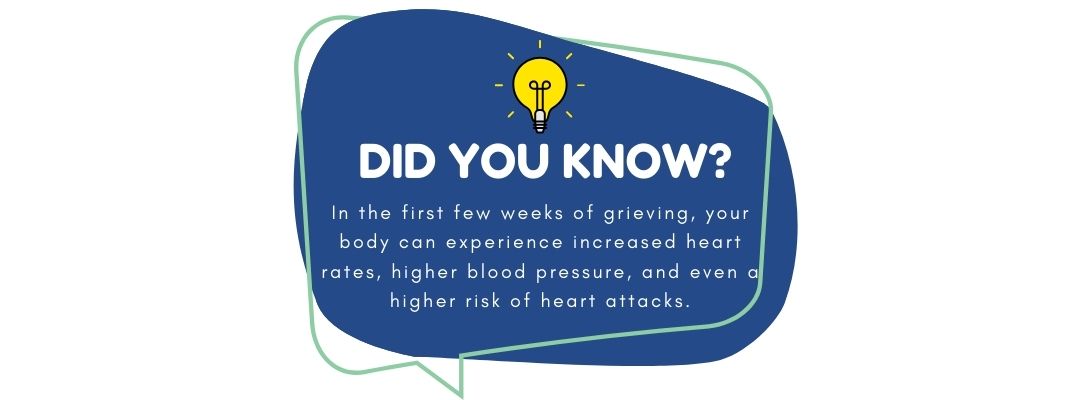Stages of Grief: Understanding the Emotional Journey of Loss
Understand the stages of grief. Grief is a complex emotional response that everyone experiences differently after a loss. Understanding the stages of grief can help individuals cope with their feelings and navigate their healing journey. Experts often outline various stages, allowing those affected to recognize their emotions and find support during difficult times.
The concept of stages of grief, often attributed to the work of Elisabeth Kübler-Ross, provides a framework for understanding this emotional experience. While these stages may vary from person to person, recognizing the common patterns can bring comfort. Engaging with these stages can also aid in discussions around mental health and emotional support.
The journey through grief is not linear, and people may fluctuate between stages. By exploring the stages of grief, readers can gain insight into their experiences and learn how to approach their healing process effectively.
Key Takeaways
- The stages of grief offer a framework for understanding emotional responses to loss.
- Grieving is a personal experience that can involve various feelings and reactions.
- Recognizing the stages can help individuals seek support and find pathways to healing.

Origins of the Grief Model
The concept of grief has evolved significantly over time. A key contributor to the modern understanding of grief is Elisabeth Kübler-Ross. Her work laid the foundation for a structured model that many still reference today.
Elisabeth Kübler-Ross
Elisabeth Kübler-Ross was a Swiss-American psychiatrist known for her research in the field of death and dying. In 1969, she published the influential book “On Death and Dying.”
In this work, she introduced the five stages of grief:
- Denial
- Anger
- Bargaining
- Depression
- Acceptance
This model helped to foster a deeper understanding of the emotional responses associated with loss. Kübler-Ross emphasized that people might not experience these stages linearly. Each person’s journey through grief is unique.
Development of the Model
Kübler-Ross developed her model based on interviews and observations of terminally ill patients. She noticed common emotional responses among those facing their mortality.
Initially, the focus was on patients experiencing grief related to their own death. Over time, it became clear that this model also applied to those grieving the loss of loved ones.
Kübler-Ross’s model shifted perspectives in psychology and healthcare. It encouraged more compassionate care for individuals dealing with loss. Many health professionals now use this model when supporting grieving families.
Understanding Grief: Stages of Greif
Grief affects individuals in many ways, including emotional experiences and physical reactions. Recognizing these responses can help people navigate their own grief journey.
Emotional Responses
When someone experiences loss, various emotions often surface. Initially, feelings of shock or disbelief may appear. This can lead to confusion and a sense of numbness. As time passes, feelings of sadness and anger may emerge.
People may also experience guilt, especially if they believe they could have done something to prevent the loss. Other emotions include loneliness and helplessness. Each person reacts differently, and feelings can change frequently.
Common Emotions in Grief:
- Shock and disbelief
- Sadness
- Anger
- Guilt
- Loneliness
These emotional responses are normal. Understanding that grief can be unpredictable helps individuals cope more effectively.
Physical and Psychological Impact
Grief does not only affect emotions; it can also impact physical health. Individuals may experience changes in sleep patterns, appetite loss, or fatigue. Increased stress can lead to headaches or stomach problems.
Psychologically, grief can affect concentration and memory. Some may find it hard to focus on tasks or make decisions.
Physical Symptoms of Grief Include:
- Insomnia or oversleeping
- Weight loss or gain
- Fatigue or low energy
These symptoms are part of the grief process. Recognizing them as normal can alleviate some distress and encourage individuals to seek support when needed.
The Five Stages of Grief
The Five Stages of Grief describe a process that many people go through when facing loss. Each stage represents a different emotional response and offers insight into how individuals may cope with their feelings.
Denial
Denial is often the first reaction to loss. It serves as a buffer that allows individuals to gradually process the reality of their situation. In this stage, a person may struggle to accept the fact that the loss has occurred.
They might think, “This can’t be happening,” or “I will wake up from this nightmare.” Denial can be a temporary defense mechanism that helps to protect emotional well-being.
As time passes, individuals may begin to confront their feelings of loss. It is important to recognize that denial is a normal part of grief and does not signal weakness or inability to cope.
Anger
Anger can surface unexpectedly and in many forms. Individuals may feel angry at themselves, the deceased, or others in their lives. This stage can manifest as frustration, irritation, or rage.
People often ask, “Why did this happen to me?” or “Who is to blame?” Anger in grief can also be directed inward, leading to feelings of guilt or self-blame.
Expressing anger in healthy ways can be vital for healing. Speaking to friends, writing in a journal, or engaging in physical activities can help people navigate this difficult emotion.
Bargaining
Bargaining often involves negotiating for an extension of life or a reprieve from distress. People may dwell on what could have been done differently to prevent the loss.
Common thoughts can include, “If only I had done this,” or “I would do anything to have them back.” This stage reflects a desire for control and often takes place in the mind.
It is important to acknowledge these thoughts without judgment. Bargaining can provide a sense of hope, but it may also lead back to feelings of denial or anger.
Depression
As the awareness of the loss becomes more pronounced, individuals may enter the depression stage. This can manifest as deep sadness or despair.
People may isolate themselves, struggle with daily activities, and experience feelings of hopelessness. Symptoms may also include changes in appetite or sleep patterns.
Acknowledging the pain in this stage is crucial. Seeking support from friends, family, or professionals can provide comfort and guidance during this difficult time.
Acceptance
Acceptance does not mean being okay with the loss. Instead, it represents a coming to terms with the new reality. In this stage, individuals find ways to move forward while honoring their loss.
They may begin to adjust their lives and embrace new possibilities. The focus shifts towards healing and finding meaning in life after loss.
Acceptance is a gradual process and varies for everyone. It can lead to personal growth and a renewed sense of purpose over time.
Criticisms and Revisions
The stages of grief model has faced various critiques that highlight its limitations and inconsistencies. Both academic scholars and the public have questioned its validity and application, leading to alternative views on how grief is experienced.
Academic Perspectives
Many scholars argue that the stages of grief, proposed by Elisabeth Kübler-Ross, do not reflect the real experience of grieving individuals. Research shows that grief is often non-linear and can vary widely from person to person. Some individuals may not go through all the stages or may experience them in different orders.
A systematic analysis revealed that critics pointed out the lack of scientific backing for the five stages model. This raises concerns that relying on such a framework may make grieving individuals feel they are not grieving “correctly.” In essence, the academic community is pushing for more nuanced approaches to understanding grief.
Public Perception Changes
Public understanding of grief has evolved over time. Many people now recognize that grief does not follow a set path. For instance, forums and support groups often share personal stories that showcase diverse grieving processes.
This shift acknowledges that grief can include overlapping emotions and unique experiences. As the idea of “continuing bonds” has gained traction, many now see that maintaining a connection with a lost loved one can also play a vital role in the grieving process. Such changes in perception reflect a broader understanding of how complex and individual grief can be.
Alternative Models and Theories
Many experts have proposed different models to explain the grieving process. These alternative theories provide new perspectives and can help individuals understand their experiences with grief.
Worden’s Four Tasks of Mourning
William Worden developed a model that focuses on tasks rather than stages. According to Worden, there are four tasks that individuals must work through in order to heal from grief:
- Accept the Reality of the Loss: Acknowledging that the loved one is gone is crucial. This acceptance can be a painful realization.
- Process the Pain of Grief: People must allow themselves to feel the pain. Ignoring feelings can prolong the grief process.
- Adjust to a World Without the Deceased: This task involves adapting to life changes. It may mean finding new roles or relationships.
- Find an Enduring Connection: Forming a new relationship with the deceased can help. This relationship continues through memories and acts of remembrance.
By working through these tasks, individuals can move toward healing at their own pace.
Stroebe and Schut’s Dual Process Model
Stroebe and Schut proposed a model that emphasizes two main processes in grieving. Their Dual Process Model focuses on:
- Loss-Oriented Process: This involves dealing with the grief and the emotions that come with the loss. It includes feelings of sadness and yearning for the deceased.
- Restoration-Oriented Process: This process focuses on the adjustments and changes in life after the loss. It includes activities that help the bereaved adapt to a new reality.
People often switch between these two processes. This flexibility allows them to experience their grief while also finding ways to move forward. The model reflects the complexity of grief, showing that it is not a straight path.
Application of Grief Stages in Therapy
Grief stages serve as valuable tools in therapy, helping clients understand their emotions during loss. Therapists apply specific techniques and coping strategies to guide individuals through these challenging times effectively.
Grief Counseling Techniques
Therapists often use structured approaches to help clients navigate their grief. One common technique is active listening, where the therapist provides a safe space for the individual to express feelings without judgment. This reinforces trust and open communication.
Another technique is cognitive behavioral therapy (CBT). CBT helps clients identify and challenge negative thoughts related to their grief. This can aid in reshaping their perspective, making it easier to process emotions.
Additionally, therapists may utilize expressive therapies like art or music therapy. These approaches allow clients to articulate their grief through creative outlets, facilitating healing and self-discovery.
Coping Strategies and Support Systems
Effective coping strategies are essential for individuals dealing with grief. Many therapists encourage the use of support groups. These groups provide a community where individuals can share experiences and feel understood. Peer support often alleviates feelings of isolation.
Mindfulness practices are also beneficial. Techniques such as deep breathing and meditation help individuals stay present and manage overwhelming emotions. This can reduce anxiety and foster emotional resilience.
Additionally, establishing a routine can provide stability. Daily activities, like exercise or hobbies, can divert attention from grief while promoting mental well-being. Encouraging clients to maintain connections with friends and family is crucial, as social support plays a significant role in healing.
Cultural and Individual Variations
Grieving is influenced by cultural practices and individual personality traits. Different cultures have unique ways of expressing grief and mourning, while personality can shape how one processes these emotions.
Cross-Cultural Differences
Grief expressions vary significantly across cultures. In many Western cultures, such as the United States, grief is often viewed as an individual experience. People may seek therapy or counseling to cope with their feelings.
In contrast, collectivist cultures, like those in many parts of Asia and Africa, emphasize communal support. Mourning rituals often involve family and community gatherings. This support helps individuals feel less isolated in their grief.
Additionally, certain religions may dictate specific mourning practices. For example, Jewish traditions include a period of shiva, where community support plays a crucial role. These cultural differences highlight the importance of context in how grief is experienced and expressed.
Personality Influences on Grieving
Individual personality traits significantly affect the grieving process. For example, a person who is more introverted may prefer to process grief quietly and privately. They might avoid sharing their feelings openly with others.
Conversely, extroverted individuals may seek out social interactions to cope. They often feel better when surrounded by friends and family.
Research indicates that resilience can also influence how one approaches grief. Those with a positive outlook may find it easier to adapt to loss. They might use coping strategies that help them move forward. Understanding these personality influences can provide deeper insight into the grieving process for each individual.
 Source: Health.com
Source: Health.com
Grief in the Digital Age
The digital age has transformed how individuals experience and express grief. Online platforms offer new ways to connect, remember, and seek support while also introducing unique challenges.
Social Media and Mourning
Social media has become a space for individuals to share their grief publicly. Many users post tributes or memories of loved ones, providing a collective way to mourn. This can create feelings of connection, as friends and family can express their condolences in comments or messages.
However, this public space can also complicate grief. Not everyone may feel comfortable sharing their feelings online. The pressure to maintain a certain image or respond to comments can add stress during an already difficult time.
It’s essential for individuals to navigate their social media presence based on their comfort levels and emotional needs.
Virtual Memorials and Communities
Virtual memorials have gained popularity as a way to honor the deceased. These online spaces allow individuals to create lasting tributes that friends and family can visit. They often include photos, stories, and messages, serving as a digital gathering place for remembrance.
Additionally, online communities provide support for those grieving. Many people join forums or groups where they can connect with others facing similar losses. These communities offer a space for sharing experiences and coping strategies.
While these digital connections can be beneficial, they can also lead to feelings of isolation. The challenge lies in balancing online interactions with personal emotional needs during the grieving process.
Frequently Asked Questions
Grief is a complex experience that varies greatly among individuals. Understanding common questions about its stages can provide clarity and support during the grieving process.
What is the average duration for each stage of grief?
The duration of each stage of grief can vary widely. Some people may spend a few days in one stage, while others may take weeks or even months. There is no set timeline, as everyone processes grief differently.
How do the stages of grief manifest differently in individual experiences?
Each person’s experience of grief is unique. Some may feel intense emotions like anger or guilt, while others might experience numbness. Factors such as personality, relationship to the lost one, and past experiences all influence how grief manifests.
Can the stages of grief occur out of the traditional order?
Yes, stages of grief do not always happen in a fixed order. Individuals may move back and forth between stages or skip some entirely. This flexibility reflects the personal and unpredictable nature of grief.
What coping strategies are effective for dealing with the stages of grief?
Effective coping strategies include talking with friends or family, seeking support groups, and journaling thoughts and feelings. Mindfulness practices, such as meditation and deep breathing, can also help manage emotional distress.
How can one identify if they are stuck in a particular stage of grief?
Signs of being stuck in a stage may include persistent feelings of anger, guilt, or denial that interfere with daily life. If an individual finds it hard to progress through the stages or feels overwhelmed, they may benefit from professional support.
What is the significance of the acceptance stage in the grieving process?
The acceptance stage signifies a movement towards healing and rebuilding. It does not mean forgetting the loss but rather coming to terms with it. Acceptance allows individuals to integrate their grief and start to find a new normal.
Conclusion: High Functioning Depression
In conclusion, high-functioning depression can be a silent, yet impactful, struggle for many individuals. Despite outward appearances of normalcy and success, the internal battle with persistent sadness, fatigue, and hopelessness can be overwhelming. Recognizing the signs and understanding its complexities is crucial for providing the necessary support and care. With appropriate treatment strategies—including therapy, medication, and holistic practices—individuals can manage their symptoms and improve their overall quality of life. It is important to remember that even those who seem to function well may be facing significant emotional challenges. Encouraging open communication, fostering supportive relationships, and seeking professional help are key steps in addressing high-functioning depression and promoting mental health awareness.
You’re not alone, and help is always within reach. Contact us today at (774) 619-7750 and take control over your mental health.




